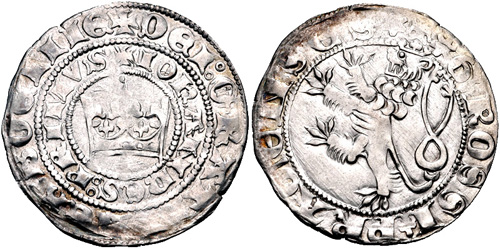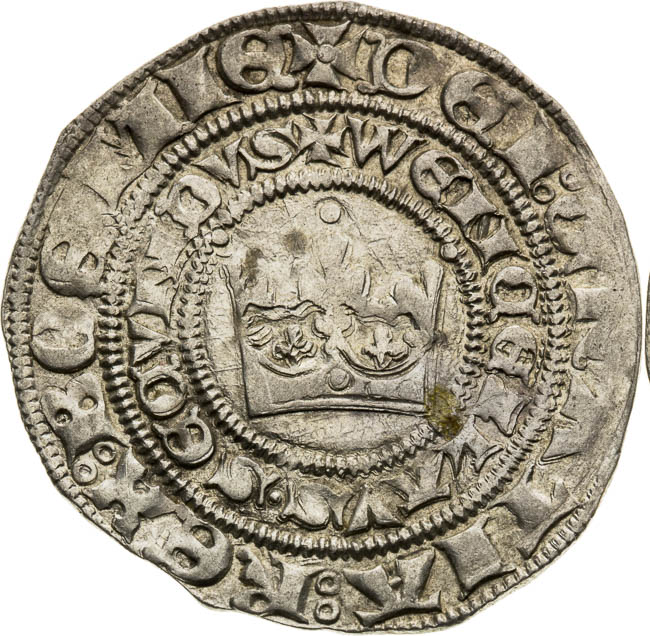Recommended Advice To Numbering Prague Mint Medals
Wiki Article
Why Is A Gold Coin Or Medal 3d-Modeled From A Plaster Cast?
This process uses specially designed equipment to digitize a maquette and record its dimensions. The digital copies are utilized for various uses during production.
3D Scanning - High-resolution scanners capture physical dimensions and detail of the model. These scanners use various methods, such as laser scanning or structured light, to take precise measurements and geometrical details.
Capturing Surface Information: The scanner emits laser or light beams onto the surface of the plaster model. The scanner records the surface information of the model by recording the reflections, distortions and other effects caused by the beams.
Data Collection - When the scanner moves across the model, it gathers an immense amount of data, resulting in a digital version of the model's geometry contours and details.
Conversion to 3D Model. The collected data is processed by specialized software that converts it to a 3D digital version. This model is a replica of the physical and dimension of the maquette of plaster.
What are the reasons for making an electronic 3D model?
Digital 3D model allows for precise replication of the physical model’s dimensions and specifics. It is important to maintain this precision to ensure that the final design of the gold medal or coin is in line with the original.
Digital models can be easily altered and improved. Designers can make adjustments to the 3D model without altering the initial plaster model, making it possible to make improvements or corrections over time.
Compatibleness of Digital 3D Models with Manufacturing Processes. Digital 3D model are compatible with a variety of manufacturing techniques, such as CNC machining.
Digital 3D model archives and documentation- Digital models are archived as records of the design. You can store them digitally as a reference for future reference, to make reproductions, or as a way to record the history of the design.
By scanning a plaster model and creating a precise digital 3D model, producers and designers are able reduce production time, increase accuracy, and use modern manufacturing techniques to make gold coins or medals with accuracy. Check out the best Scanning and 3D Modeling Czechoslovakia gold coins site recommendations. including saint gaudens gold coin, saint gaudens double eagle, gold bullion bars for sale, gold bullion price, gold sovereign coins, gold angel coin, gold medal gymnasts, gold bullion bars, price of 1 oz of gold, gold doubloons and more.

What Is The Process By Which The Janvier Machine Transfer The Design Of The Gold Coin To The Hub That Is In Operation?
A Janvier, also known by the terms pantograph and reducer machine, is employed to transfer designs for a coin or medal from a master hub onto a working hub. Here is an overview on how this Master Hub Creation works.
The master hub is the original die, or mold, which contains exactly the design of the coin or medal. To ensure its accuracy the hub is usually made using CNC manufacturing and other precise methods.
Janvier Machine - Setup
The Janvier machine is made up of a stylus which traces the pattern on the hub master, and a cutting tool that copies this design to the working hub.
The Janvier machine comes with a master hub, which serves as a template for the transfer of design.
Retracing The Design
The Janvier machine employs a stylus to follow the contours and detail of the design. As the stylus moves on the surface of master hub it keeps track of its shape.
Reduce the Design
The Janvier machine also duplicates the pattern traced onto the working hub. The hub is usually composed of softer materials like nickel or steel, as opposed to the master hub.
The cutting device cuts or transfers the design onto the hub of the working wheel at a reduced dimension or size compared to the master hub. This reduction allows for striking coins and medals in the exact size.
Precision and Accuracy
Janvier's machine operates with precision and ensures a perfect transfer of details from the master to the work hub. It accurately reproduces all details and contours, even the smallest ones.
Quality Control
Inspections and quality checks are carried out to ensure that the design used is compatible with the specifications and precision required for the process of striking.
Additional Processing
The Janvier machine's working hub can be used to create coins or medals. It is used to create multiple blanks of the coin or medal with the design transferred.
The Janvier machine plays an important part in the production process because it permits the exact reproduction and resizing of intricate designs on coins or medals from a working hub into a master hub. Working Hubs are utilized to produce large quantities of medals or coins through the process of striking. Check out the most popular janvier processing Czechoslovakia gold medals blog recommendations. including silver bars for sale near me, price of 5 dollar gold coin, gold buffalo, 1oz of gold, price of 1 oz of gold, bullion bars gold, golden dime, gold morgan dollar, gold apmex price, buy gold and silver and more.
Why And How Are Some Types Of Finishes, Such As Texture Or Matte Surfaces Achieved By Sandblasting?
Sandblasting is a technique used to produce textured or matte surfaces on gold coins and medals. The process of Sandblasting is explained.
Surface preparation- The medal, coin or other piece of material is placed in an enclosed chamber or cabinet equipped with the nozzle which is connected to compressor. This chamber is often covered to protect the abrasive material that is used to prepare the surface.
Abrasive Materials Selection - At high speeds, tiny particles of abrasive substances like silicon carbide (sand), glass beads, or aluminum oxide are carried over the surface of the coin or medal.
High-Pressure - The abrasive particles are pushed onto the surface using compressed air or another high-pressure system. The texture or finish is determined by the force and speed at which the particles hit the surface.
Texture Creation: The force caused by the abrasive grains the surface produces the appearance of a matte or textured by altering the topography the surface. This process can be used to create a uniform texture or roughen specific areas.
Controlled Application- Sandblasting can be controlled by intensity, duration, and angle of application to produce different textures or the appearance. Different types of abrasives and levels of pressure result in different outcomes.
Sandblasting is a reason why it's done
Texture Variation - Sandblasting can create a wide range of textures, including smooth, frosted and matte surfaces. They can add attraction and distinctive characteristics to the medals or coins.
Aesthetic enhancement- Sandblasting can alter the surface appearance by diffusing light, and thus reducing shine. This may improve the appearance of a coin. Matte finishes can in particular, draw attention to particular design elements since they can reduce the glare.
Anti-glare Property - Sandblasting creates smooth or matte surfaces that reduce glare, reflections and makes the item more attractive.
Contrasting Design Elements. Sandblasting creates contrast between polished and textured ones on the coin. It is a great way to highlight certain design elements or to give them visual depth.
Sandblasting provides customization options that allow for artistic expression and permits medals, coins, or other items to be created with distinct textures or finishes that are unique to the design.
Sandblasting is a new method that can be applied on gold coins to create different surface textures. It also enhances the overall look of the medals. View the top sandblasting Prague Mint gold coins more advice. including buy gold bullion, canadian gold maple leaf coin, gold pieces for sale, 1 oz gold coin price today, ngc grading, 100 grams gold biscuit, 1 0z gold price, 1 oz silver price, gold and coin dealers near me, 10oz gold bars and more.

How Is Gold Fed Through The Coin Presses, And Then Stamped Under High-Pressure While Minting?
During the minting process gold blanks are loaded into coin presses, where they are stamped under extreme pressure to make into finished pieces of gold or coins. Here's a brief outline of how to load blanks.
Gold blanks, which have been previously prepared and inspected for quality, are fed into a feeder system connected to the coin press. This feeder system guarantees a continuous supply of blanks for the press.
Feeding Blanks into the Press
The feeder system guides each blank to the strike zone of the coin presses. This allows for precise positioning of the blanks.
Alignment and Positioning
The blanks are placed and aligned in the striking chamber of the press to ensure they are perfectly aligned for the stamping operation.
Strumping in High Pressure
The coin presses apply immense pressure on gold blanks using a pair dies - one stationary and one mobile. The stationary die has the negative image of the coin's design, while the moving die is the hammer that strikes the blank.
The moving die transfers the design of the blank onto its surface using a lot of force. Die pressure results in relief raised and details on the coin.
Repeated Striking
Multiple strikes can be used to create a better defined design or image on higher quality coins and medals. Each strike increases the fine details of the surface of the blank.
Ejection and Collection
After being struck, the coins or medals that are created are taken from the press. They are then put in trays and containers. The designs that are stamped are subjected to quality control inspections in order to make sure they conform to the standards and requirements.
Post-Processing-
Minted coins or medals may undergo additional procedures such as edge lettering edge reeding or post-strike treatment based on the design requirements or specifications for mints.
Stamping with high pressure etch the desired designs on gold-plated blanks, and transforms them to finished coins or medals ready for circulation, collections or for commemoration. The precision is crucial, because even the slightest deviation in the pressurization or alignment of the gold-plated blanks may result in a negative impact on the appearance and quality of the finished product. Check out the top rated minting Prague Mint gold medals blog tips. including american eagle gold coin price, 1 oz gold, gold silver bullion, gold biscuit buy, silver double eagle coin, old silver coin, bullion price of silver, buy gold bullion, price of 5 dollar gold coin, american eagle gold coin price and more.
